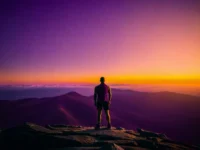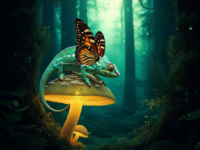It’s 9 PM, a cool clear night, and you glance up at the deep canvas overhead. An endless sea of twinkling lights greets you—mysterious, beautiful, impossibly far away. Have you ever paused in moments like this and wondered, “What out there am I missing?” Here’s the good news—you don’t need fancy telescopes or exorbitantly priced equipment to marvel at some of the most incredible cosmic wonders.
Astronomy may feel like an intimidating field, but here’s a little secret for you—some of its magic is literally in plain sight. For amateur stargazers, casual lovers of the night sky, or anyone just looking to reconnect with something grander than themselves, these celestial events are waiting for you to notice them.
This guide will take you through some of the most mesmerizing astronomical phenomena you can observe without a telescope, along with tips on when, where, and how to watch. Plus, we’ll even explore the stories and science behind them because, after all, the universe has been wowing humanity for centuries.
Table of Contents
Phenomena You Can Witness With Just Your Eyes
1. Meteor Showers
Raise your hand if you’ve made a wish on a shooting star. Meteor showers are nature’s way of delivering countless “shooting stars” in one night. These celestial displays occur when Earth passes through the dusty trails of comets. When those tiny bits of debris enter our atmosphere, they burn up and streak across the sky in luminous, fleeting arcs.
Some of the most prominent meteor showers include the Perseids (August) and the Geminids (December). They’re dazzling, reliable, and easily observable as long as you find a dark spot away from city lights.
Pro Tip: Lie flat on the ground (or bring a comfy reclining chair), look up, and give your eyes 20–30 minutes to adjust to the darkness. Patience rewards the stargazer during these events.
2. Lunar Eclipses
A total lunar eclipse turns the moon an eerie orange-red—also called a “blood moon.” The phenomenon occurs when the Earth passes directly between the sun and the moon, casting its shadow over the moon’s surface.
Unlike solar eclipses, lunar eclipses are completely safe to view with the naked eye and require no special equipment. They tend to last several hours, giving you plenty of time to gape at the surreal sight that connects us all to something ancient and infinite.
Pro Tip: Check online eclipse calendars (NASA’s page is a great resource) so you can plan your next Blood Moon viewing party.
3. Phases of the Moon
How often do we look up at the moon and truly appreciate how dynamic it is? The moon’s phases—a reliable cycle of waxing, waning, full, and new—are some of the easiest yet most fascinating sights to observe.
A full moon feels magical, lighting up the night sky with buttery silver hues. But don’t count out the crescent moons and first-quarter phases—they reveal the lunar surface’s texture and craters in a way that’s sharper and more defined.
Pro Tip: Download stargazing apps like SkySafari or Time and Date to track the moon’s phases and ensure you don’t miss key opportunities.
4. The Milky Way
Our galactic home, the Milky Way, becomes a breathtaking sight when observed from a rural or wilderness area free of light pollution. Stretching across the sky like a misty river of stars, the Milky Way reminds you just how vast the cosmos truly is.
Pro Tip: Late summer nights in the Northern Hemisphere are the best time to spot the Milky Way. Bring a blanket and prepare for a quiet, humbling kind of magic.
5. Planetary Alignments
Now and then, planets like Venus, Jupiter, and Saturn line up in the sky, creating a celestial parade that’s nearly impossible to ignore. Venus is often dubbed the “Evening Star” for its brightness, but keep a lookout for the brighter-than-average “star” that doesn’t twinkle—it’s probably a neighbouring planet.
Pro Tip: If you’ve never seen the rings of Saturn, binoculars (a step up from bare eyes) can give just that little boost in detail while remaining beginner-friendly.
Finding the Perfect Stargazing Spot
Here’s something nobody tells you when you start exploring astronomy—it’s just as much about where you are as it is about what you’re looking for.
Seek Dark Skies
To see the most vivid displays, you need to escape light pollution. Cities flood the night sky with so much artificial light that even the brightest stars get washed out. Instead, look for rural areas, national parks, or certified Dark Sky Reserves.
Pro Tip: Websites like lightpollutionmap.info can help you find nearby stargazing spots with minimal light interference.
Plan for the Right Times
Timing is everything. Meteor showers peak on specific days, and lunar eclipses may only be visible in certain regions. Set up reminders and check celestial event calendars so you don’t miss out.
Why Humanity is Captivated by the Stars
If you’ve never been awestruck looking at the night sky, I’m here to tell you that you’re long overdue. The events we’ve just talked about? They’re not just pretty lights—they’re part of a legacy that’s intertwined with human history.
- The Perseid Meteor Shower, for instance, is named after the constellation Perseus and has been tracked by civilizations for over 2,000 years.
- The Mayans built their entire calendars and temples around the movements of the moon.
- For centuries, explorers relied on constellations for navigation.
When you connect with the cosmos in this way, you don’t just witness a phenomenon; you become part of a bigger story.
Get to Know the Science Behind the Magic
Science adds a fascinating layer of wonder to the cosmos. Why do meteors burn up in Earth’s atmosphere? Why does the moon turn red during an eclipse? It all comes down to celestial mechanics—gravity, heat, orbits, and light.
Take the meteor shower, for example—each streak of light is often no bigger than a grain of sand, burning up due to friction with our atmosphere. The blood moon? It’s the sunlight bending through Earth’s atmosphere and illuminating the moon in rust-coloured hues.
It’s this intricate dance of physics and nature that both demystifies the sky while keeping its allure intact.
Share Your Stargazing Stories
The next time you spot a shooting star or lose yourself in the immensity of the Milky Way, don’t keep it to yourself. Grab a camera, take a shot (yes, phone cameras can work if you aim for the moon or brightly lit planets), and share it with the rest of us stargazers.
Tag your celestial adventures on social media and inspire someone else to look up for the first time in too long. Because in the end, the stars aren’t just for dreaming—they’re for connecting, wondering, and remembering that we’re all under the same infinite sky.
Keep your eyes on the stars, and happy stargazing, friends.





















0 Comments